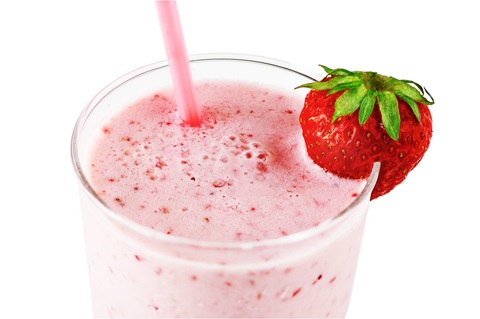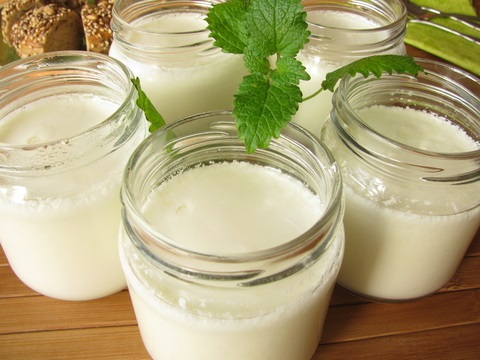Apprentice chef: The ferment wars
Share :
Each experiment comes with a recipe for a tasty, nutritious dish that you can enjoy with your family and friends. The secrets of cooking are yours to discover, apprentice chef!
Making yogurt: Lactic fermentation experiment
Keeping your gut healthy!
Did you know that your digestive system contains billions and billions of bacteria?
Although “bad” bacteria that can make you sick do exist, the bacteria inside you are mostly “good guys”. These harmless bacteria are, in fact, essential to your well-being: they help you to digest food, protect you from illness, and produce vitamins. In exchange, you provide the bacteria with a habitat and nutrients.
Are you familiar with yogurt and kefir? These foods are probiotics, which means they are full of live bacteria. Just like the ones that live in your intestinal tract, the bacteria you take in by eating probiotics stay in your large intestine for a period of time and help you digest food. Try this fun experiment, to see how milk can be turned into a nutritious probiotic. Then make yourself a yummy breakfast smoothie that’s chock full of “good” bacteria.
Allergy warning!
Do not conduct this experiment if you are allergic to milk.
Experiment
In this experiment, you’ll make your own yogurt by turning milk into a probiotic through lactic fermentation.
Objective
You will gain an understanding of how the lactic bacteria found in fermented milk products can help us digest food and keep our gut healthy.
Materials
- Saucepan
- Mixing spoon
- Measuring cup
- Measuring spoon
- Candy thermometer
- Insulated container or glass jar, 500 ml or larger
Ingredients
- 500 ml (2 cups) milk (note that the percentage of milk fat affects the texture of the yogurt: for a creamier yogurt, use milk with 3.25% milk fat)
- 30 ml (2 tablespoons) plain yogurt containing live bacteria (look for the words active or live bacterial cultures in the ingredients list or on the packaging).
Instructions
- Wash the insulated container or glass jar thoroughly.
- Pour the milk into the saucepan.
- With the help of an adult, heat the milk on the stove over medium heat. Stir gently, until the thermometer reads between 79°C and 82°C (175°F and 180°F). Heating the milk destroys harmful microorganisms that could be present. This process is called pasteurization.
- Take the saucepan off the burner.
- Allow the milk to cool for 10 to 15 minutes or until the thermometer reads between 43°C and 46°C (105°F and 115°F). Add the yogurt to the milk, stirring gently with a spoon. Do not overmix.
- Slowly pour the mixture into the insulated container or glass jar. Put the lid in place, but not too tightly.
- Put the insulated container or glass jar in a warm spot and let it sit for at least 6 hours. The ideal temperature for incubating yogurt is between 43°C and 46°C (105°F and 115°F). If you are using a glass jar, the oven is a good place to let it sit. Heat the oven to the temperature above, turn it off, and put the glass jar inside. Once the oven door is closed, the oven will maintain a good incubation temperature for several hours. Or, you can simply put the insulated container or glass jar near a radiator or in a picnic cooler along with a bottle of hot water.
- Check the contents of the insulated container or glass jar by turning it sideways. The yogurt is ready when the contents have set and a transparent yellowish liquid has formed. The incubation time will affect the taste of your yogurt. For a milder taste, stop incubating the yogurt once it has set. For a tarter flavour, allow the yogurt to incubate longer.
- For a thicker, Greek-style yogurt, line a strainer with paper coffee filters and pour the yogurt into the strainer. Let the yogurt drain into a bowl, in the refrigerator, for several hours.
- Keep the yogurt in the refrigerator. Enjoy it with berries, jam, granola, or a drizzle of maple syrup or honey.
In an airtight covered container, homemade yogurt will keep for two weeks in the refrigerator.
Please see the printable PDFs at the bottom of the section.
- Observations and questions
- Lactic fermentation experiment answer sheet
Now you know
To the naked eye, milk looks like a plain white liquid. But milk is actually a combination of various particles suspended in water. This type of mixture is called a colloid. Milk contains proteins called caseins. It also contains fat globules, sugar (in the form of lactose), vitamins, minerals, enzymes, and sometimes even microorganisms.
Caseins form small spheres that bump up against each other and bounce off each other again. But in the presence of acid, when these spheres meet, they begin to stick together instead of pushing apart. This process is called coagulation. In unheated milk, casein spheres that come together form short chains. The resulting curdled, granular mass cannot retain liquid.
For yogurt to have a smooth texture, the milk must first be heated. Heat changes the shape of the casein spheres. In the presence of heat, then acid, casein spheres that come together form long chains. The resulting mass is like a sponge. The components of yogurt — fat, sugars, uncoagulated proteins, enzymes, vitamins, minerals and live bacteria — are imprisoned in the holes of the casein sponge.
Recipe: Breakfast smoothie
Please see the printable PDF below.
Printable PDFs
- Observations and questions (PDF, 252 KB)
- Lactic fermentation experiment answer sheet (PDF, 367 KB)
- Breakfast smoothie (PDF, 228 KB)
Be food safe and allergy aware! Visit Health Canada’s website to learn more about food safety and food allergies.
You may also be interested in
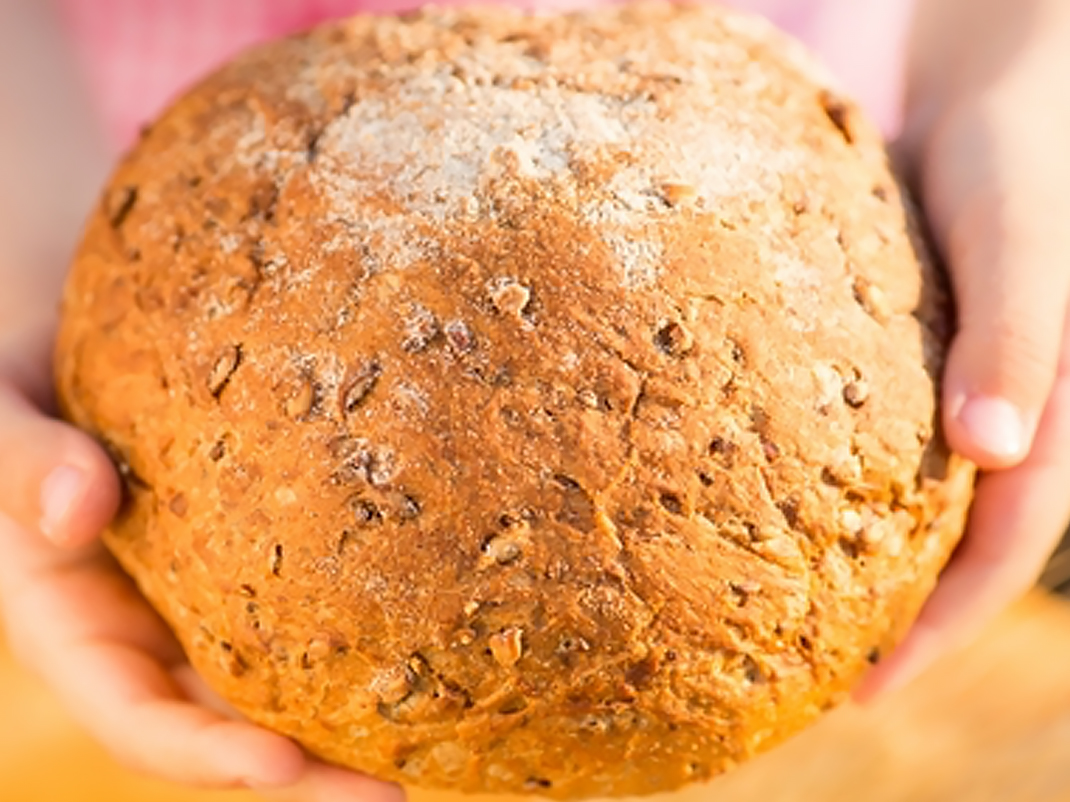
Apprentice chef: Bread science
Discover the science of bread through fun, educational activities! Learn how yeast, fermentation, and baking transform ingredients into delicious bread.
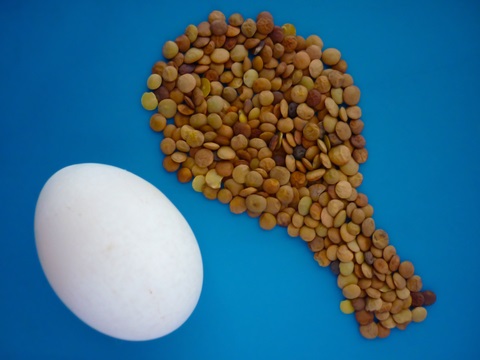
Apprentice chef: Mighty proteins
Learn about proteins and their role in your body through fun experiments with eggs and pulses. Discover how protein-rich foods help you stay strong and healthy!
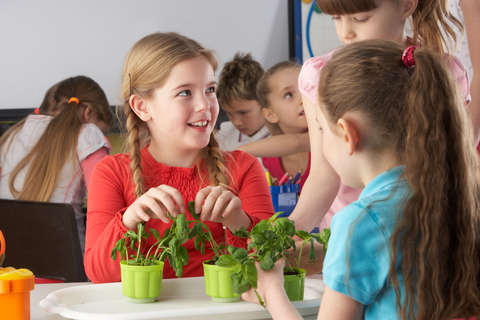
Apprentice chef: Sprouting experiments
Discover how fruits and vegetables support your health while learning to regrow plants from scraps and create delicious recipes in these fun experiments!
